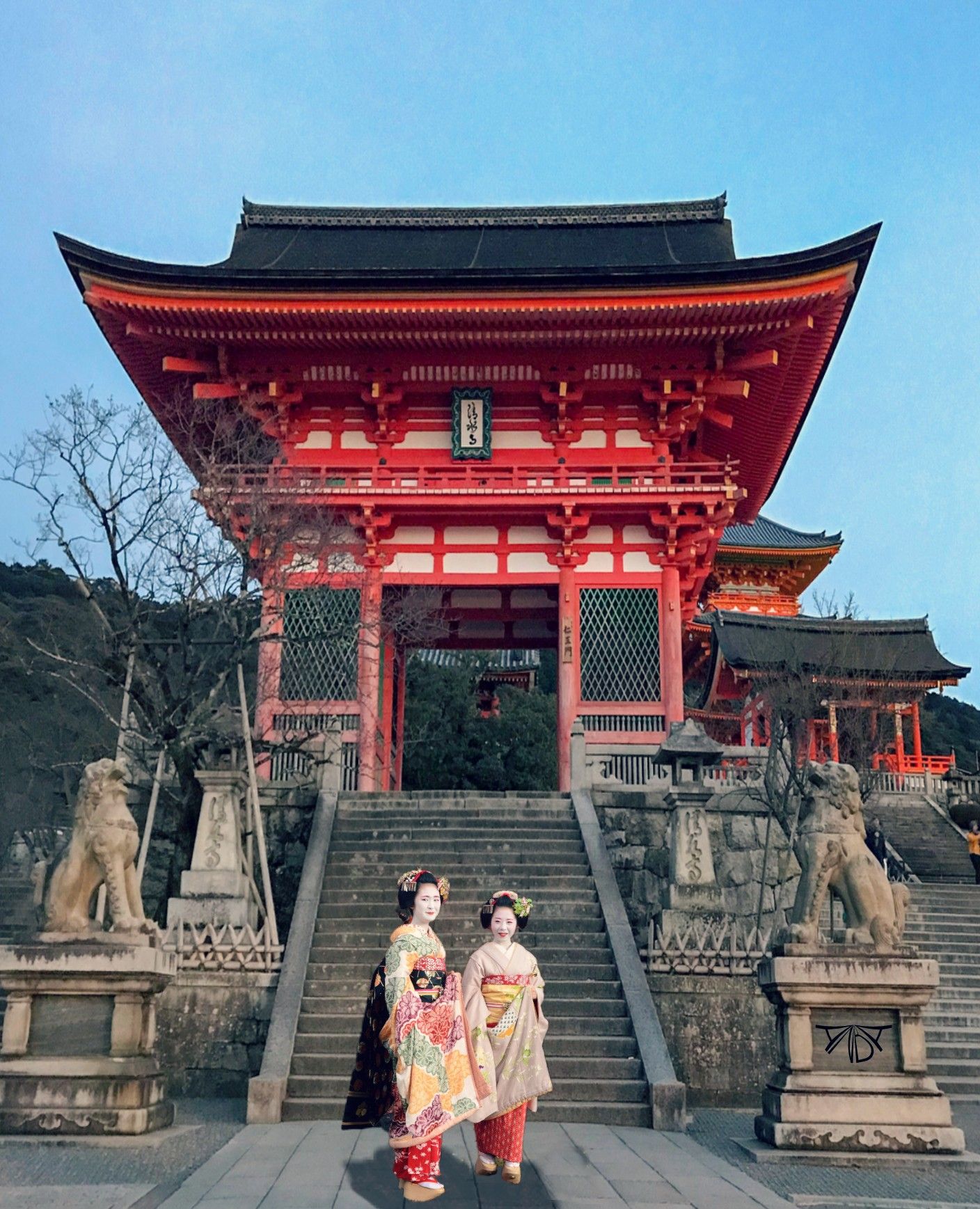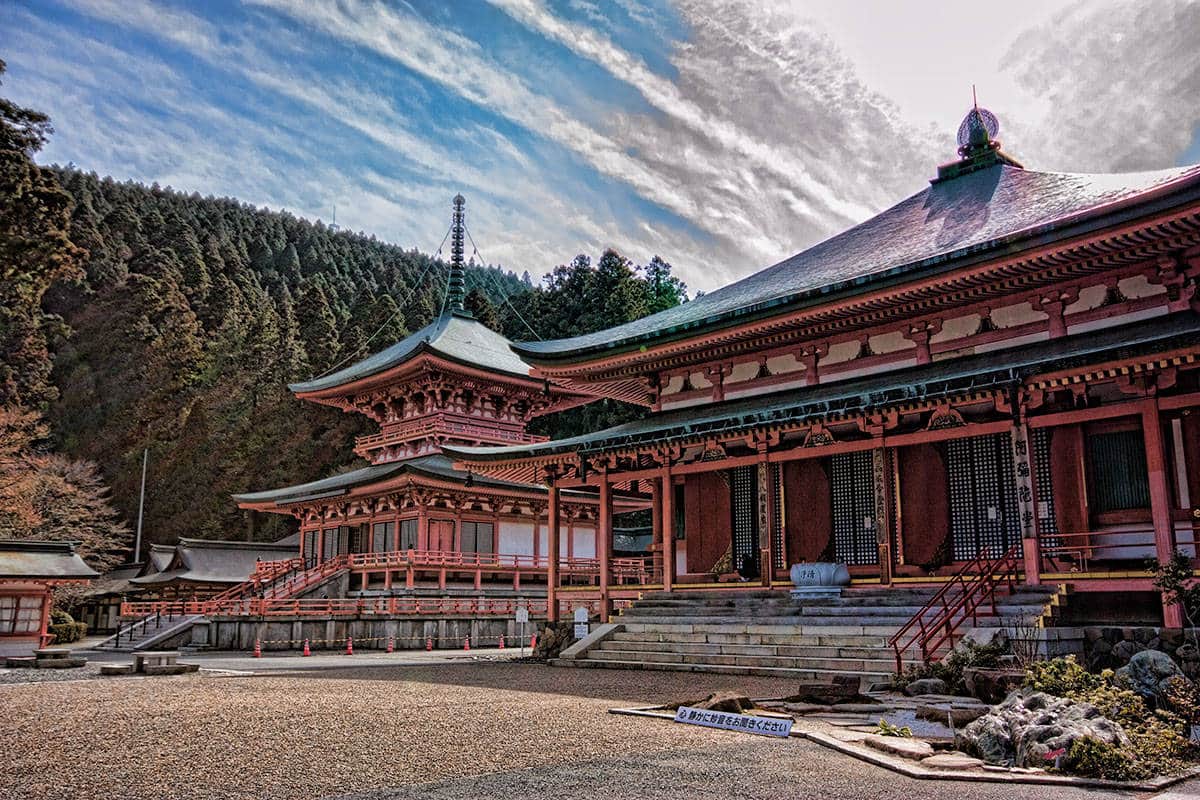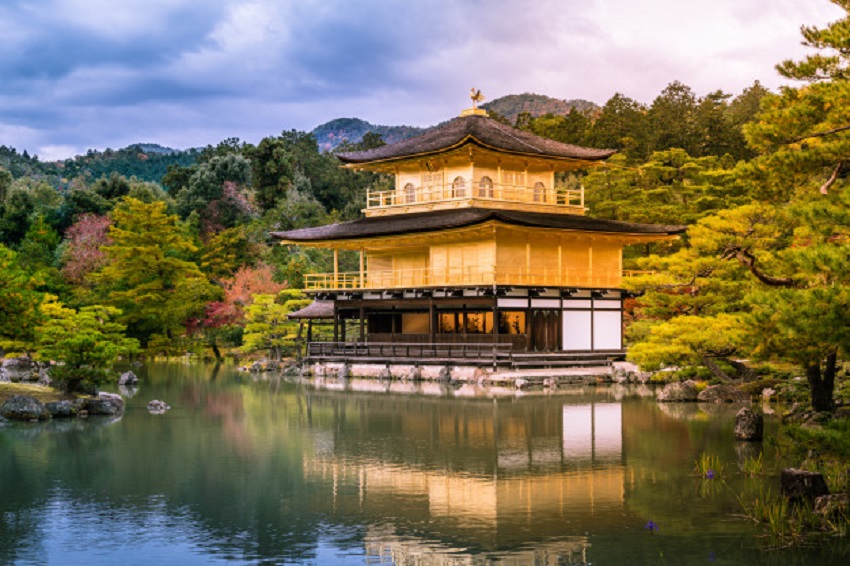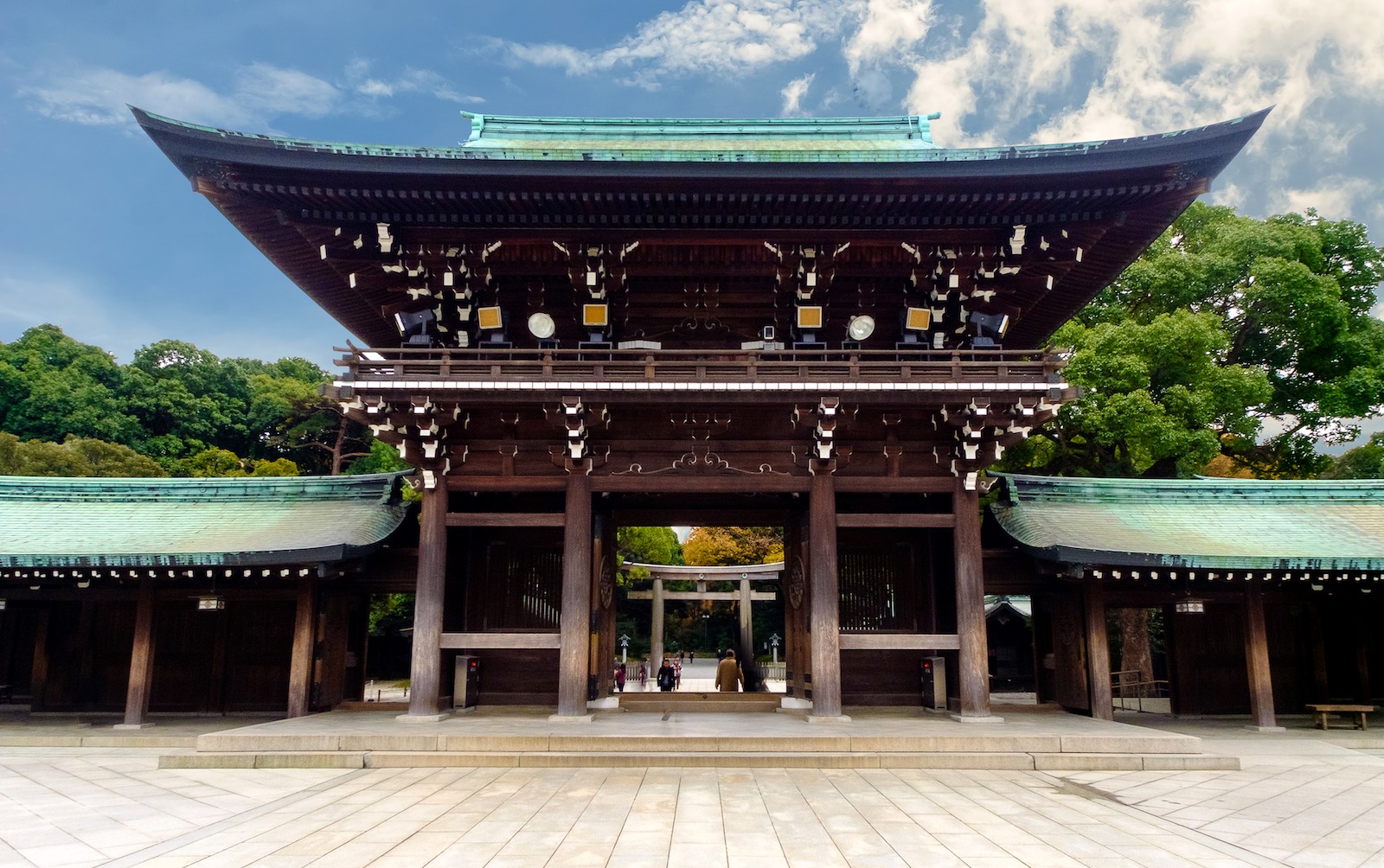Buddhism along with Shintoism are the most important religions in Japan, and one of the ways to honor these religions is through the construction of these enclosures that blend with the landscape throughout the Japanese country. Through this article, we invite you to learn a little more about the Japanese temples.

Japanese temples
Japanese temples are scattered among numerous and spectacular landscapes, these ancient Japanese temples are distinguished by their particular oriental design established by indisputable notions, and sometimes difficult to differentiate due to the religious mortar between 2 main beliefs, but depending on who is revered they manage to classify as Buddhists or Shintoists and, to a lesser extent, Confucianists.
And if, for the Japanese this does not seem to be of such importance, these places, rather than to use them to pray and talk with the kamis, establish meeting places to bring society closer. Next, these are the most popular and visited Japanese temples in this Japanese land:
Japanese Buddhist Temples
In Japan, there are a hundred and a little more Japanese Buddhist temples, this is so, that in each locality of this Japanese country there is at least one of these. These spaces base their distribution through rectangular enclosures accommodated by doors that seal the entrance to the sacred land guarded by two guardian effigies called Niô or Kongōrikishi.
They also have a main hall which is the center of exhibition of the main image of Buddha; In addition, the kodo or event hall, which is usually used to hold protocol meetings, and finally the five-level pagoda where the sacred relics are kept, to perfect the view, this complex is surrounded by Zen-style gardens. Some of the temples of Japanese culture that exemplify Buddhist models are:
Enryaku-ji
One of the Japanese temples was established by Saicho, a precursor of Tendai Buddhism in the Heian period and is the most transcendental temple of Buddhist doctrine. Located on the 848-meter-high Mount Hiei, and on the border between Shiga and Kyoto provinces, the temple is separated into three main sites: To-do, Sai-to, and Yokawa, collectively known as Hieizan Enryaku-ji.
In this sacred mountain, great monks in history such as Honen, Shinran, Eisai, Dokyo and Nichiren studied and practiced this doctrine; Furthermore, the temple protected the capital and the nation from the northwest direction where evil spirits are found. To add, this enclosure was declared a World Heritage Site by Unesco in 1994.
Kiyomizu
It is one of the most famous temples in Japan, this was established in the year 780 on the same site of the Otowa waterfall to the east of Kyoto. The temple was originally from the Hosso sect of Buddhism, one of the oldest sects of Japanese Buddhism. This during the year 1994, was designated as a World Heritage Site by UNESCO.
One of the most popular attractions of this enclosure is the large wooden balcony from where you can see the landscape full of wonderful cherry blossom trees and the city of Kyoto; This place is prohibited from entering the public, you can only enter the balcony named above, where there are little shops where you can buy amulets or any other souvenir; In addition, in this place you can admire a small figure of Kanon with eleven faces and one hundred arms.
Behind the temple is the Jishu Shrine, which is offered to the deity in charge of love; There you will find two stones placed 18 meters apart, which according to what they say that if a person manages to pass from one to the other with their eyes covered, they would find love.
The Otowa waterfall is located below the temple, there is usually an influx of visitors and they line up to drink from these waters, depending on the source you drink from, one thing or another will be worth it. If you follow the path, between this enclosure and the waterfall, you will find a three-story pagoda called Pagoda Koyasu and it is said that it offers protection and ease of childbirth to any woman who is pregnant.
Kotoku-in
This enclosure is located in Kamakura in the province of Kanagawa, and is very popular for its huge bronze image of Buddha; Its dimensions include a height of 11,35 meters with a weight of 121 tons. Currently the representation of Buddha is located outside, however, in past times it was located in a special room that had been built to house it; this structure is no longer there, but the remains of the 56 pillars can still be seen. The lobby building was destroyed in the XNUMXth century by earthquake and fire.
The construction of the statue began in 1252 and it is still not clear who its creator was, the original statue finished in 1238 was made of wood but was destroyed by a typhoon, so it was decided to make one in bronze.
Kinkaku-ji
This is a Zen temple in northern Kyoto, distinguished by the fact that two of its spaces are lined with gold. It was previously distinguished as Rokuonji and was the retreat of the Shogun Ashikaga Yoshimitsu, his last wish was to turn it into a Zen compound after his death, and this was done in the year 1408. His grandson, Ashikaga Yoshimasa, was inspired by him to build the Ginkakuji temple or silver pavilion on the other side of the city a few decades later.
This temple was built exactly in front of a large reservoir, and it is the last collection work that Ashikaga Yoshimitsu had built. It has been burned and demolished on many occasions, the closest incident occurred in 1950 by an exalted monk and the current building is a restoration from 1955.
Each division constitutes a different architectural design, but these spaces cannot be visited: The first space of the temple is made in Shinden design, used in palaces in the Heian period; this is made up of plaster walls and wooden bracing, along with statues of Buddha and Ashikaga Yoshimitsu.
The second space is built in the Bukke design, commonly used in samurai residences, and its exterior is completely gold plated. Inside is a statue of the Bodhisattva Kannon, surrounded by four other statues representing the four heavenly kings: Bishamon, Zōchōten, Jikokuten, and Kōmokuten.
The third and final space of the temple, is built in the architectural design of Chinese Zen meditation halls and is also covered with gold plating.
It is important to note that there are innumerable Buddhist temples that exist in every corner of Japan; Other temples of Buddhism that we can mention are:
- Nara are the Tadai-ji
- Horyuji
- Shitennō-ji
- Sanjusangen-do
- Ryoanji
- Meaning-ji
Japanese Shinto Shrines
Sometimes Shinto shrines are called jinja or yashiro, which, unlike Buddhists, do not have the characteristics of a chapel; however, they are differentiated by the traditional arch or torii, which usually appears in all the entrances of these, in addition to a room for gifts and the ema or wooden plates where vows can be written, whose sole purpose is the blessing and devotion of a kami Among these types of Japanese shrines, we have:
Itsukushima
It is located on Itsukushima Island next to the town of Hatsukaichi, Hiroshima province. It is founded on the surface of the water and is registered as a UNESCO World Heritage Site in 1996; in addition to being preserved by strict heritage conservation laws.
The sanctuary that is under the management of the Japanese government, is the main attraction of Miyajima, it has an enclosure with a pier from where you can see a torii gate built in the sea; this torii arch can be touched when the tide is low.
Fushimi inari
It is one of the most important enclosures in Japan and is famous for its many torii gates placed one after another and was founded in 794 AD It is offered to the kami Inari, the god of rice. This deity is usually identified with the foxes who are his messengers, which is why you can see so many statues of them along the way. The design of these gates is located just behind the main enclosure in the forest of the sacred Mount Inari, which is 233 meters long and belongs to the same sacred complex.
Meiji Jingu
It is offered to the spirits of Emperor Meiji and his spouse Empress Shoken. It is located right next to the Harajuku station. This enclosure is next to the Yoyogi Park, and its natural environment stands out a lot for the great city that is built around it.
This shrine was built in 1920, 8 years after the death of the Emperor and 6 years after the death of the Empress. It was destroyed during World War II, but was soon rebuilt given its importance.
The Meiji Emperor was the first emperor of contemporary Japan, his birth was in 1852 and he reached the throne in 1867 when he was only 15 years old, in the most important stage of the Meiji Renewal. When feudal Japan ended and began to modernize and westernize to make deals with great developed nations, the Emperor died in 1912.
It is one of the most popular places in Japan, in the first days of the year during Hatsumode, it receives more than 3 million visits, more than any other venue in this region.
Nikko Tosho-gu
This was built between 1634 and 1636 at the beginning of the Edo period, for Tokugawa Ieyasu after his death. His grandson Iemitsu concluded building a monument so that the spirit of his grandfather would rest. For 2 years, more than 15 thousand artisans and carpenters from all over the country worked on the construction of the monument that would contain the ashes of the shōgun Tokugawa Ieyasu. The design of this represents the Gongen-zukuri style, very characteristic of Japanese shrines.
The site was designated as a shrine during the Meiji period; In the first space, the Gojunoto Pagoda is located, with five floors, where each one symbolizes the 4 elements:
- Earth
- Water
- Fuego
- Air
These are located in ascending order. In front is the Niomon gate, bordered by two effigies of Niō; the first, with the mouth parted to enunciate “a”, the first character of Sanskrit; and the second effigy has its mouth closed, finishing enunciating one last letter.
Behind the Niomon gate is the second open space, where the sacred stable is located, in front of it, is the popular wood carving of the three wise monkeys. For several hours a day, the stable is used to protect the horse given to Nikkō by the New Zealand government. In this area there is also a library of sutras, and the courtyard is surrounded by storehouses and the holy spring built in 1618, used for purification rituals.
From there, there are two steps leading up to the Yomeimon Gate, which leads to the final open space and the precincts offered to the shogun. Yomeimon is probably the most elegantly decorated work in the entire complex; one of its wooden pilasters is intentionally overturned, to represent it imperfectly.
Before reaching the Yomeimon gate, you pass between the drum and the bell towers, which house the instruments that represent the beginning and death. Access to the shōgun precincts is through the Karamon gate, the smallest of the monuments. Tokugawa Ieyasu's tomb is not located in the enclosures, but in an adjoining tower, called Hōtō.
If you found this article on the Japanese Temples interesting, we invite you to enjoy these others:



